-
Virgil Vernier: MERCURIALES (2014)
VIRGIL VERNIER: MERCURIALES (2014)

ANA NEBORAC, PHILIPPINE STINDE IN MERCURIALES
Nubile young women wandering in search of . . . something
Virgil Vernier works with interesting documentary elements and exceptional access to intimate situations to put together a sketchy fiction that ultimately does not cohere in Mercuriales, a film that starts out with a big twin tower high-rise apartment building in the Parisian suburb of Bagnolet, and fans out from there to a sex club, a mall, employment-hunting by several nubile young women, Eastern Europe and a romance that gorws out of working as receptionists at the high-rise.
Vernier's venture into feature length is enhanced by beautifully processed 16mm images by cinematographer Jordane Chouzenoux and an original electronic score by James Ferraro. Vernier claims to have taken a cue from Godard’s 2 or 3 Things I Know About Her (1967). But that was a long time ago and times have changed, and these soulless, aimless young women looking for jobs, status, and a purpose in life but showing no signs of finding them are little like the youth discovering a wealth of new possibility in the Sixies. This is a festival film for those who will find something in it. Potentially rich material fails to cohere. A disappointment, and Vernier's male fascination with nubile female bodies, even a young girl's, verges on the voyeuristic and exploitive, the more so in view of the failure to generate a meaningful narrative context.
Mercuriales, 100 mins., was screened for this review as part of the 2015 New Directors/New Films series, jointly sponsored by the FSLC and MoMA.
Last edited by Chris Knipp; 03-12-2015 at 07:18 AM.
-
Sarah Leonor: THE GREAT MAN (2014)
SARAH LEONOR: THE GREAT MAN/LE GRAND HOMME (2014)

RAMZAN IDIEV AND SURHO SUAIPOV IN THE GREAT MAN
A wild leopard, a boy, and two fathers
Sarah Leonor is a gifted and idiosyncratic director. This is her second film. Her first, A Real Life/Au voleur, featured the fascinating, tragically short-lived son of Gérard Depardieu, Guillaume. Here arguably she tells more of a story, one of friendship, heroism, loyalty, fatherhood, and a boy's search for his father, in the context of being an immigrant without papers. It's a richly emotional tale that's told both in a fable-like, poetic way and in the terms of a breathless thriller. Seen as part of an edition of New Directors/New Films disappointingly thin in good stories, The Great Man/Le grand homme is a tale and slice of life that offers meaty rewards. It's no harm that the terrific Jérémie Renier gives un unusually vigorous and committed performance here as the bosom Foreign Legion war buddy who becomes a surrogate father for the boy who's cut off by the crossfire of global politics, war, and bad luck.
Jordan Mintzer reviewed the film at Toronto for Hollywood Reporter, speaking of the way it evokes memories of Claire Denis’s Beau Travail "with its stylistic flourishes and hardworking French Legionnaires," and also "Michael Haneke’s 71 Fragments of a Chronology of Chance with its splintered portrait of illegal aliens scraping by in the big city."
It's hard to get one's head around the events that Leonor skillfully weaves together in her film -- sometimes in a crabwise fashion that evokes Claire Denis further. We begin with the voice-over spoken by a youth. He turns out to be the Chechen boy, Khadji (Ramzan Idiev) son of Markov (non-actor Surho Sugaipov). It is clear he is idolizing his father. The background event, almost legendary, is when Markov and his fellow Foreign Legionaire Hamilton (Jérémie Renier) are tracking a wild leopard in a desert war zone, at the end of their posting in Afghanistan. When there's an ambush, Markov saves Hamilton, but this is considered an abdication of the Legion's rigid code, which Markov later recites to Khadji. An ambush results in an abdication of duty—despite it stemming from an act of fidelity. Hamilton is sent to France for treatment, and Markov is mustered out, though both are encouraged to reenlist.
We jump forward to France, where Hamilton is recovering from two bullet wounds and Markov finds Khadji, whom he hasn't seen for five years. Perhaps the best sequence in the film is the one where Markov, speaking first Chechan, then French, struggles to win back Khadji's trust, while the angry boy refuses to speak anything but French, as they ride a Seine Bateau Mouche. The film is shot through with the mystique of the French Foreign Legion, through which Markov, Hamilton, and eventually Khadji, share: macho idealism and hope that provides a substitute for the lost mother and homeland, presumably. If these ideas don't feel quite digested, and Renier's acting seems a bit overemphatic at times, it all fits with the film's primary loyalty to the unrealistic but passionate sensibility of the young boy who has lost, regained, and then again lost his father, and then found another. In these circumstances and with this point of view, the film can be a melodrama that's over-the-top, and yet seem perfectly right for the devastating, touching subject matter. Surho Sugaipov is touching as the Chechan father, Ramzan Idiev even more so as the boy, who quietly shoulders the film's central role. A compass, a motorcycle, a deluxe hotel, train rides, a tent, and trips inside and outside Paris are skillfully used to build up the boy's picture of events and the 24 hours of urban thriller that are the film's key third act.
The Great Man/Le grand homme, 107 mins., opened in Paris 13 August 2014 to very favorable reviews (AlloCiné press rating 3.4). It debuted at Toronto's Discovery section in September 2014. Screened for this review as part of the 2015 FSLC-MoMA series, New Directors/New Films. A Distrib Films release.
Last edited by Chris Knipp; 11-19-2015 at 11:47 AM.
-
Myroslav Slaboshpytskiy: THE TRIBE (2014)
MYROSLAV SLABOSHPYTSKIY: THE TRIBE (2014)
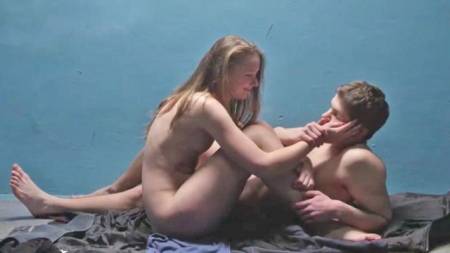
Yana Novikova and Grigory Fesenko in The Tribe
School of hard knocks for the deaf seen in gestural tableaux
Those looking for movie novelty will certainly find it in Myroslav Slaboshpytskiy'snew Ukrainian film The Tribe, a hit at Cannes 2014 and with festival reviewers. The initial gimmick, and it's a strange and original one, is that all communication in the film takes place between predominantly young deaf people presumed to be at a boarding school who speak only in sign language. In Ukrainian. And there are no subtitles provided. I say "presumed," because this is like no boarding school you've ever seen, not even the borstals of Alan Clarke's realistic films. After a new boy Sergey (Grigory Fesenko) arrives following some sort of (silent) graduation ceremony, he's sent to a class where the government's pre-Maidan anti-EU decision seems to come up. After that, Sergey is not seen in a class. He's much too busy being hazed and tested; then being involved in the school's drug and prostitution activities, which seem to involve a wood shop teacher (Alexander Panivan), and two girls, Anya (Yana Novikova) and Svetka (Rosa Babiy), who are taken to work at a truck stop. Sergey pays for a session with Anya, and then they become lovers. The girls seek visas to Italy, which becomes complicated. The plot gets quite complicated after that, in a series of events leading up to a violent finale.
Writers about this film have called its events "shocking" and "vivid," and perhaps they are if taken literally, notably a series of brutal murders and, before that, a crude anesthetic-free abortion suffered by Anya, during which she cries out long and pitifully in pain -- an ugly moment all the more striking because the actors rarely make sounds in this film. The trouble is that the young deaf non-actors enlisted by Slaboshpytskiy for the film's scenes, who are enthusiastic, to say the least, seem to be miming rather than literally enacting events. The sex scenes are obviously faked. The other scenes are much the same, except that the boys do hit each other pretty hard at times when acting out fights or physical abuse. But they seem to be exaggerating everything, and sign language seems itself to involve much over-emphatic gesturing.
It is not that such activities as these couldn't take place in a school; only the film fails to establish and maintain the atmosphere of a functioning school, focusing on the sex and moving of drugs (a lot of plastic bags stuffed with littler bags), the mugging of locals for money and booze, the beating up of one or two boys, and Sergey's quick ascent from newbie nobody to functioning unit in the "school's" bad behavior. These events often happen at night. But when does the school happen?
It therefore ultimately seems a stretch to call this a school, because it is only partially established as one. But it likewise seems a bit over-imaginative to refer to what goes on here, as Justin Chang, writing from Cannes for Variety, does, as "a violent cesspool of organized crime." It's just not realistically enough staged to seem that. One of the key elements, and a serious limitation, is that Slaboshpytskiy stages his action in the middle distance, without closeups. He doesn't get close to his actors, or delineate his characters. Images that appear sensuous and beautiful in stills never emerge as such in the actual film. This puts us at a further emotional distance from events that we're already cut off from us due to never understanding any of the things that are said. To argue that "actions speak louder than words" or say this returns us to the power of silent film is to forget that silent film (which did have title cards) was deeply emotional but simpler and cruder than sound, and things are being said in every scene here that the filmmaker's stylized choice makes mute for us. Chang is surely right in saying The Tribe would be "a significant conversation-piece at every festival it plays," but that leaves in doubt how these two hours and twelve minutes of Ukrainian sign language without subtitles will play for the larger art house audience, and whether ultimately this will seem anything other than a vivid curio.
The idea of The Tribe stimulated the imagination. The film itself proved to be the biggest disappointment of the March 2015 New Directors/New Films series.
The Tribe/Plemya племя), 132 mins., debuted at Cannes 2014 winning the Critics Week prize. It opened in Paris in October to good reviews but with some strong dissenters (AlloCiné press rating 3.5). Set for US theaters as a Drafthouse Films release.
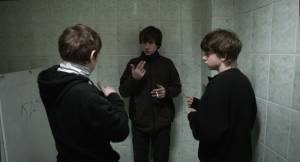
Last edited by Chris Knipp; 03-17-2015 at 10:51 PM.
-
Stevan Riley: LISTEN TO ME MARLON (2015)
STEVAN RILEY: LISTEN TO ME MARLON (2015)
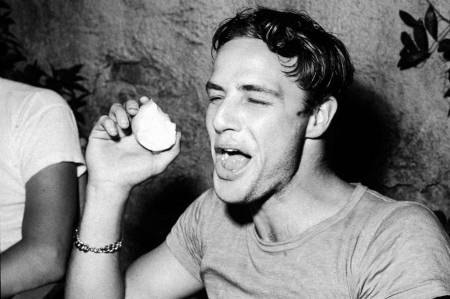
Well rounded but not ground-breaking documentary portrait of Marlon Brando
Making use of all sorts of conventional documentary material, Listen Up Marlon has so much archival footage, including interviews, and newly unearthed tapes Brando made extensively for himself, it has no need for the boring convention of talking heads. It is as well-rounded, complex, and fair a portrait as he might have wanted. It's just a shame that it feels so conventional in some aspects, worst of which is the use of loud and ordinary background music in a hundred places where it is not needed, or should be downplayed.
Riley incorporates all kinds of previously unseen errata, including behind the scenes, promotional, and TV appearance videos, home movies, early snapshots, and other personal memorabilia to fill out a portrait of the man and artist. There are news reports and tabloid headlines about the more scandalous and unfavorable moments of Brando's life.
But most of all there is a portrait of the fabulous but uneven career, and of the difficult and troubled personality, with explanations of the early family history that explains why Brando was troubled, angry, untrusting, a bad father, unable to love and, in his own words, seeking love "in all the wrong places," because he was never loved by his alcoholic and unavailable mother and alcoholic and abusive father -- who sent him off to military school.
There are beautiful clips of Brando's films, and first of all of his performance, which looks like the greatest of his career (as well as the one that made him famous) as Stanley Kowalski in A Streetcar Named Desire on stage. The good and the bad are here: not only the famous lines from On the Waterfront (the Oscar-winning role he later thought embarrassing), The Godfather, and so forth, but also bad, cheap, or failed projects like the Chaplin-directed The Countess from Hong Kong.
When you watch Brando's onstage Kowalski, which he says made him feel "like a million dollars" every night, but also took an immense amount out of him, following the principles form his teacher (whom he moved in with) Stella Adler of the New School -- you see the hunkiest, sexiest, most vibrant, most exciting, most astonishing actor ever on a 20th-century American stage. You understand why Brando was called "the greatest actor of his generation," though this is an estimation the bright, self-conscious, initially very shy Brando always dismissed or dodged.
When you see Brando's first Hollywood screen test, when he simply smiles and turns around showing all angles of his head to the camera, he looks like Warren Beatty, and more. He had that kind of irresistible handsomeness, that beauty, that charm, that sex appeal, that glittering smile. When he was young, he had it all.
When you see him talking to Dick Cavett, you realize Brando's intelligence, how articulate he could be, what a good vocabulary he had, and how angry he was. And you gradually learn the focus of his anger, doubtless inspired by the meanness of his father and the lovelessness of his childhood, on political injustice in America, and notably on the mistreatment of Native Americans, signaled when he "very regretfully" turned down the Best Actor Oscar for The Godfather, sending the Native American actress Sacheen Littlefeather to do so, protesting Hollywood's portrayal of Native Americans in film.
Riley's documentary is successful particularly in its organization and its arc. (It is a work of skillful compilation, not innovation.) It interrelates Brando's acting career and his complicated, troubled personality, and it shows the up, down, and up of his career. It shows how his early poor self-image connects with his frequent deprecating of the acting profession (but also his acknowledgment that acting was the best thing he could ever have done: he said his becoming an actor was a stroke of luck, and if he'd not been an actor he'd have become a con man). Best of all while redeeming the character of the man through a fair depiction of his political activism -- despite his poor performance as a father and troubled family life -- the documentary also shows how Brando redeemed his acting career after a period of trashing it with bad, commercial films and indifferent roles, with the brilliant, rich, and career-capping roles of the Godfather films, Last Tango in Paris, and Apocalypse Now. The genesis of Brando's performances in each of these films is well shown in Brando's own words. Coppola doesn't come through well here, since he's depicted as blaming Brando for production problems of Apocalypse Now that were his own fault, and Brando says he rewrote the entire script.
Listen to Me Marlon (the title comes from a self-hypnosis tape Brando made to calm himself) was reviewed at Sundance for Variety by Dennis Harvey and in Hollywood Reporter by Todd McCarthy. They point out what is new or notable in the footage here. McCarthy points out that shots of the interior of Brando's demolished Mulholland Drive house are false, studio recreations, but perhaps, he suggests, "the only things 'false' here."
In the end, given the impressive (if in style conventional) coverage of Brando's complex and important career, the "new" element of the private Brando tapes (not to mention the digitalized face of Brando speaking some of these taped words) comes across as the least important element, adding not so much that is substantial and also, incidentally, marred by poor sound quality that makes some words difficult to distinguish. However, for the record, Todd McCarthy summarizes: "What comes across is a man with identifiable and specific psychological issues, which, thanks to both extensive psychotherapy and even self-hypnosis, he was able to articulate better than anyone else could. Yet he was never able to conquer other demons and baggage." We know that, but this film is as impressive a review of the great career and complex man as you could get in 100 minutes.
Listen to me Marlon, 100 mins., debuted at Sundance 2015. Screened for this review as part of the Film Society of Lincoln Center-Museum of Modern Art series, New Directors/New Films. A Showtime presentation. Not exactly clear why this needed to be included in the "New Directors" series: Rilen has done four previous documentaries, and the material here is not new or presented in an innovative way. Theatrical release by Abramorama begins 29 and 31 July (NYC and LA), opening in the San Francisco Bay area 9 August at Landmark’s Opera Plaza Cinemas in San Francisco, Landmark's Shattuck Cinemas in Berkeley, Smith Rafael Film Center in San Rafael, and Camera 3 in San Jose.
Last edited by Chris Knipp; 07-10-2015 at 06:24 PM.
-
Severin Fiala, Veronika Franz: GOODNIGHT MOMMY (20140
SEVERIN FIALA, VERONIKA FRANZ: GOODNIGHT MOMMY (2014)

SUSANNE WUEST IN GOODNIGHT MOMMY
Twins want their mommy
The Austrian film Goodnight Mommy is chilly, strange, and elegant. It's classy, even upper-class, horror. It all takes place at an expensive and original modern house somewhere out in the country (though not too far out to be visited by donation collectors from the Red Cross). It's also a film that's hauntingly ambiguous all the way through. Somebody is deluded, but who? We never really learn for sure. Perhaps it's not "so much weird as just plain disturbing," which was something that Mike D'Angelo, writing for The Dissolve from Toronto, said of the film. His report was how I first heard about this intriguing, if perhaps ultimately a little disappointing film. It's also in its final stages a nauseating film, one almost unbearable to watch, as may befit a product from the workshop, so to speak, of Ulrich Seidl, since Veronika Franz has repeatedly been his writing collaborator, and Seidl produced here.
In Goodnight Mommy there are two nine-year-old blond twin boys, Elias and Lukas (Elias and Lukas Schwarz) and their mother (Susanne Wuest). But is she their mother? She initially appears at the house, apparently after an operation, with her face bandaged like the masked heroine of Eyes Without a Face . To us, she is scary and strange. She's observed by Elias and Lukas fearfully, from a distance. At first she seems to avoid them, behaving furtively and insisting she requires rest and absolute quiet. To them she appears very strange, but also some of her behavior that we see but the boys don't is suspicious and may show her involved in deception. These mysteries are never resolved. When she begins interacting with Elias and Lukas more, she is mean to them, punishing them and restricting them, actually refusing ever to speak to Elias.
This is not the way they remember their mother behaving with them. They begin to doubt that she is their mother as she purports to be. The boys' own behavior begins to be increasingly bizarre, though always within a play world realm of little boys with the incestuous complicity of identical twins living in an isolated place. As D'Angelo puts it, "For a good long while, mere creepiness reigns." "But," he adds, "my screening saw multiple walkouts during the finale, which takes a sudden turn into prolonged torture. . ." This is as much perhaps as one should say about the direction the movie takes.
It's arguable that the Goodnight Mommy , while starting out extremely well, deteriorates from reel to reel. That nothing is ever quite as good thereafter as in its stylish, creepy, haunting opening shots. That it is less good but still original and fresh focused on the boys while the "mere creepiness" gathers. And that when the torture begins and the flashy ending comes, Fiala and Franz have moved into more conventional territory.
Still this is a horror film that is both classier and nastier than the majority of the genre, while for good and for ill avoiding most of the standard grabber devices of such films. It's not out of place to be reminded of Yorgos Lanthimos of Dogtooth: there's something conceptual and stylish going on here. (I now find Peter Debruge writing from Venice in Variety calls this "A fairy tale for Dogtooth enthusiasts." He also mentions Haneke's Funny Games.) I like the boys in bright homemade masks. I like their play with beetles. I like their frolicking -- and jumping on a big circular trampoline -- in a heavy rainstorm. I like the very stylish modern house, one so distinctive in design and decor and artwork that a series of photographs of its exterior and interiors can be found, as the boys do find them, on the internet. As the Toronto Festival blurb put it, "the family's home resembles a monumental tomb — a chillingly perfect setting for the film's story of familial disintegration."
The New Directors blurb reveals underlying themes when it starts out, "The dread of parental abandonment is trumped by the terror of menacing spawn." Now too much has been given away. But as in any good cinema, any narrative art, it is not the "what" but the "how," the style of the work, that makes it significant. This is quite a rich piece of work. Its content and subject matter mean Mommy will best appeal only to certain connoisseurs, but in the field of art house horror Fiala and Franz are clearly names to watch for in future.
Goodnight Mommy, 100 mins., debuted at Venice, showing at over a dozen other international festivals. Screened for this review as part of the March, 2015 edition of FSLC and MoMA's New Directors/New Films series. For theaters, it is slated to be a RADiUS-TWC release.

ELIAS AND LUKAS SCHWARZ IN GOODNIGHT MOMMY
Last edited by Chris Knipp; 03-20-2015 at 07:38 PM.
-
Oscar Ruiz Navia: LOS HONGOS (2014)
OSCAR RUIZ NAVIA: LOS HONGOS (2014)
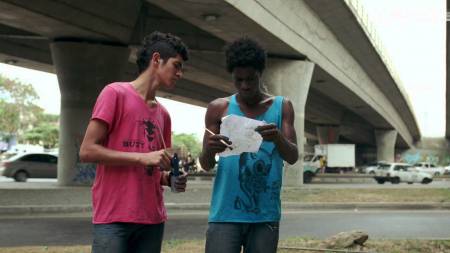
CALVIN BUENAVENTURA TASCON AND JOVAN ALEXIS MARQUINEZ ANGUILO IN LOS HONGOS
Youth and street art in Cali, Colombia
Los Hongos is a film from Cali, Colombia directed by Oscar Ruiz Navia, his second feature, the first being the 2009 Crab Trap. The title ("The Mushrooms") refers to its two teen leads -- flourishing like mushrooms in the rubbish of urban mess (or something like that). It's a semi-documentary coming of age drama that is notable for containing a wealth of contemporary flavor from its protagonists' environment. Scenes include family life, graffiti artists at work and conferring on a project, a raucous punk music concert, and an attack on the two young leads by cops for tagging a wall, which leads to their being handcuffed and dropped way out in the country and forced to walk back. This journey inspires them to make new plans and to do a wall mural of a big tree they saw and climbed out in the country.
Ras (Jovan Alexis Marquinez Angulo) and Calvin (Calvin Buenaventura Tascon) are buddies from different races and social classes who have been drawn together by a mutual attraction to hip hop culture. Ras, who is black, and whose mother has been forced to immigrate from the countryside, is never without his skateboard, and is forced to steal paint from the building site where he works, which gets him fired. His buddy Calvin is white, a child of divorced parents, who spends time taking care of his former schoolteacher granny, who is recovering from cancer treatments. He and Ras visit his father to ask him for money. He's a singer, as we learn from a clip from an actual appearance on a TV show. Calvin, who is a student at the local college of art, but often misses class, has a would-be girlfriend, also an arts student. In one scene, they have sex, apparently for the first time, but when Ras connects with an older woman at the punk concert, it's she and Calvin's girlfriend who pair off this time, leaving Ras and Calvin with only their friendship, and their dedication to street art.
In an early scene of Los Hongos the boys watch an intense video they find online of state violence against demonstrators in Cairo during the Egyptian revolution. Based on the power of this scene and the solidarity they feel with the revolution, they want to do a wall painting to express their feelings, and think of doing one based on a scene of women in dark veils engaged in political demonstrations. Later at a meeting at art school of other graffiti artists, other plans come up.
Los Hongos shows how widespread hip hop culture is, the skateboarding, the gliders, the graffiti, the music mixing punk, ska, rap, and other elements, and the universal Facebook culture of left and revolutionary youth sentiment. Ruiz Navia does not try to go into much depth, and his film can't compare with the hipness and complexity of such Latin American youth films as Alexis Dos Santos's Glue or José Manuel (Che) Sandoval's Te creís la más linda pero es la mas puta, or on an even higher level of cinematic sophistication the films of Fernando Eimbcke and Gerardo Naranjo. But it looks directly at local society and youth culture in a documentary manner in ways they perhaps don't.
Los Hongos ("The Mushrooms"), 103 mins., debuted at Locarno 2014. Reviewed there by Jay Weissberg for Variety. Screened for this review as part of the March 2015 Film Society of Lincoln Center-Museum of Modern Art series New Directors/New Films. It is a Columbia-Argentina-France-Germany production.
Last edited by Chris Knipp; 03-13-2015 at 08:40 AM.
-
Rick Alverson: ENTERTAINMENT (2015)
Closing Night
RICK ALVERSON: ENTERTAINMENT (2015)
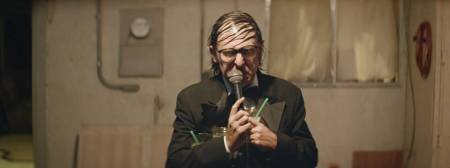
GREGG TURKINGTON IN ENTERTAINMENT
Long nasty road to despair, via unfunny humor
For those looking for a thoroughly unpleasant experience on film Rick Alverson's Entertainment is hard to beat. There are echoes of Fellini here (there's an energetic but slightly pathetic clown warmup act, played by Mud and Joe's up-and-comer Tye Sheridan), but the sad sweetness has all been replaced by mean nastiness. The film is conceived as a vehicle for Gregg Turkington or rather his two-bit washed-up performer alter ego, usually known as Neil Hamburger, whom he has reportedly played for several decades. The attempt, successful in sheer terms of screen-occupying, is to give this persona an off-stage, three-dimensional depiction.
The character is a mind-bogglingly terrible standup comic with an exceptional ability to bore and offend his small bar-club audiences and viciously and obscenely attack any members who visibly and audibly protest this assault on their sensibilities and waste of their time. He is shown touring around the Mohave desert and the empty oil-rich plains surrounding Bakersfield, California (Five Easy Pieces' setting, it's pointed out), staying in grim motels, riding in an old car, making futile nightly calls to the message machine of an estranged daughter, adding a note of pathos.
In a ritual that is shown more often than necessary, the pot-bellied, deadpan Turkington/Hamburger prepares for his "performances" by dressing in a ridiculous cheap tuxedo with outsize, outdated glasses. To enhance the unpleasant visual effect, he does an ugly comb-over that he emphasizes by making it dripping wet. He speaks to the audience in a high pitched whine, often interrupted by loud phlegm-enriched throat-clearing, and he repeats the word "Why?" gratingly. Most of his jokes are of the "What" and "Why" form, such as "Why don’t rapists eat at T.G.I. Friday’s?" and "What’s the difference between Courtney Love and the American flag?" The answers are too vulgar and offensive to repeat.
Trouble is, the chronological spaces between performances aren't always coherent, and the action is repetitious. The effect is of nails endlessly scraping across a blackboard. Cameos by John C. Riley (as the comic's supportive, but reserved cousin), Michael Cera (as a random stranger) detract from the mood rather than furthering it. The same can be said of a lecture on color theory, and a torturous moment at an optician's office (though it does provide a memorable image; Alverson may be a bit too enamored of anything that's odd and shocks).
Thus it turns out that Alverson doesn't quite wind up having the skill to build Turkington's stage schtick into the desired three-dimensional off-stage character, but as offensive, unbearable-to-watch movies go, this is up there. This will have cult appeal for hipsters in search of so-bad-it's-hilarious humor. Others need to give it a wide birth.
Perhaps the audiences are real. Doubtless the first one, in a prison, is so, and, interestingly, it is the most amused at the flat, intentionally terrible jokes of "The Comedian," as he is solely known here.
In a typically detailed review Scott Founas of Variety helps set Alverson's film in context, pointing out "The Comedian "suggests a cross between Andy Kaufman’s desiccated lounge singer Tony Clifton and Mr. Sophistication, the desperate vaudeville MC memorably played by Meade Roberts in John Cassavetes’ The Killing of a Chinese Bookie." Foundas notes besides the Cassavetes reference the film also "nods in the direction of both Two-Lane Blacktop and Paris, Texas (complete with Dean Stockwell cameo)," partly becoming a road movie.
Along the way there are far too many scenes in public restrooms. One involves a confrontation with Michael Cera as a pathetic (and not very convincing) hustler. The scene one most would prefer to forget is a horrific childbirth scene Foundas compares to Eraserhead's that may not really be happening (one certainly hopes not). By this point, the editing has become increasingly surreal, with scenes often hovering uneasily between dream, waking nightmare, and possible flashback. The road eventually leads toward Los Angeles and home, where The Comedian has a special gig for the birthday party of "a well-known celebrity." Here his existential despair leads, under pressure, to a final moment of total emotional meltdown.
Whether Alverson is one to watch or one to avoid, he clearly represents a bold and distinctive personality in the US indie film world, albeit not quite a fully formed one. As the Guardian's Jordan Hoffman writes of his feelings about Entertainment, "I’m still not sure if I should be laughing, crying, yawning or walking out of the cinema. Neither, perhaps, are the film-makers." That's not the way it needs to be.
Entertainment, 110 mins., debuted at Sundance 2015. Also reviewed by John DeFore for Hollywood Reporter. It was screened for this review as part of the March 2015 New Directors/New Films series, where it was the closing night film.
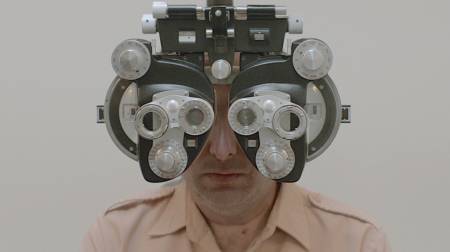
GREGG TURKINGTON IN ENTERTAINMENT
Last edited by Chris Knipp; 03-17-2015 at 01:15 PM.
 Posting Permissions
Posting Permissions
- You may not post new threads
- You may not post replies
- You may not post attachments
- You may not edit your posts
-
Forum Rules





 Reply With Quote
Reply With Quote









Bookmarks